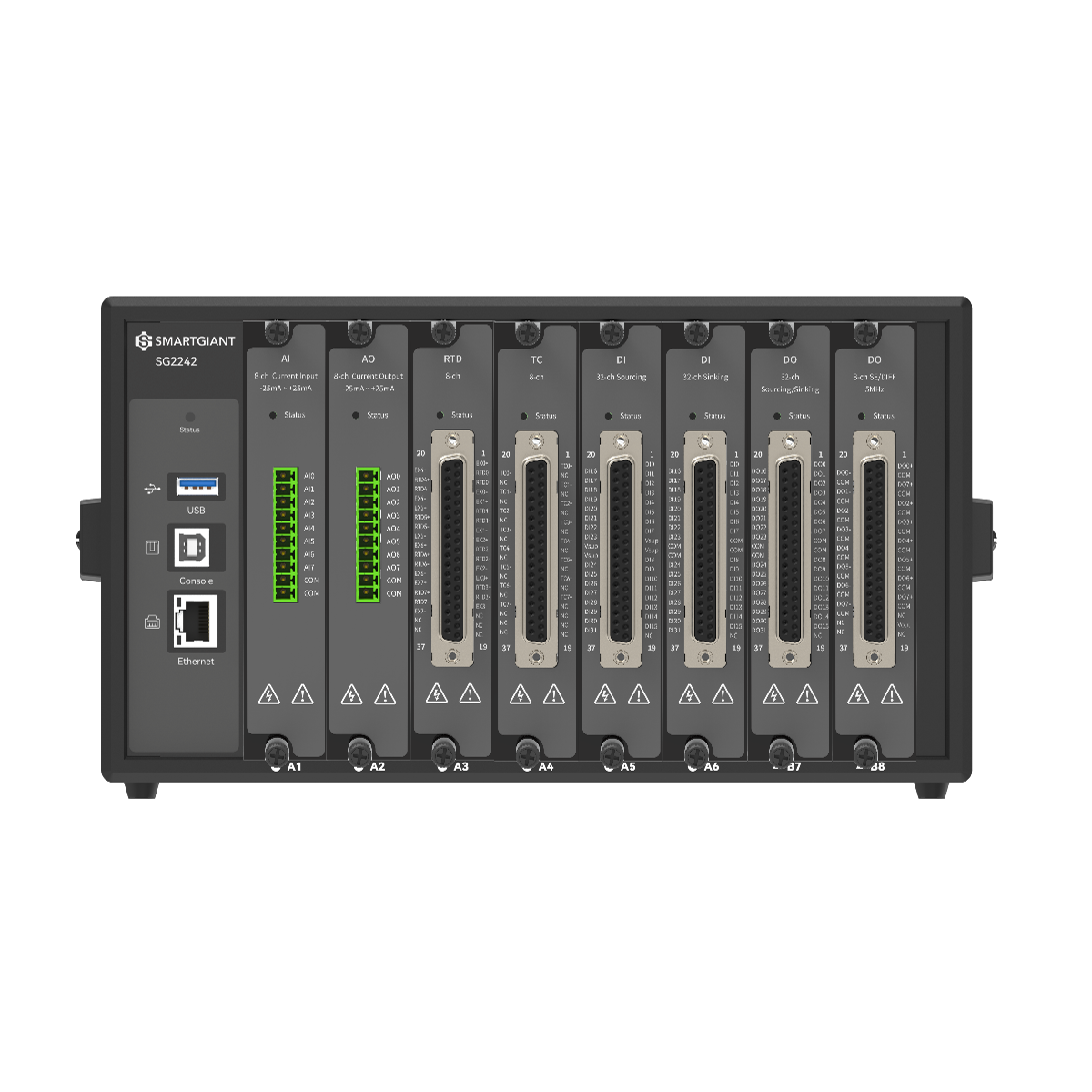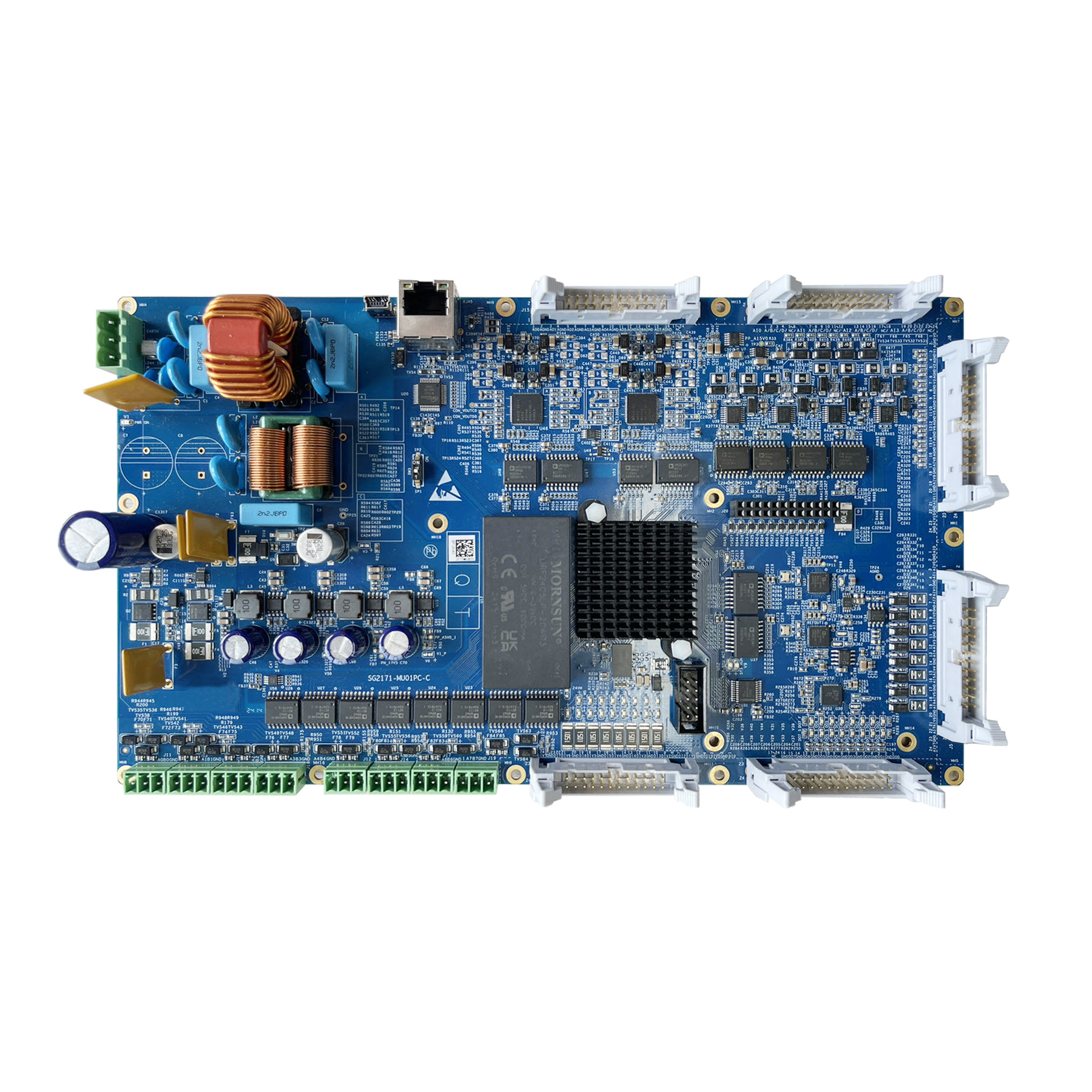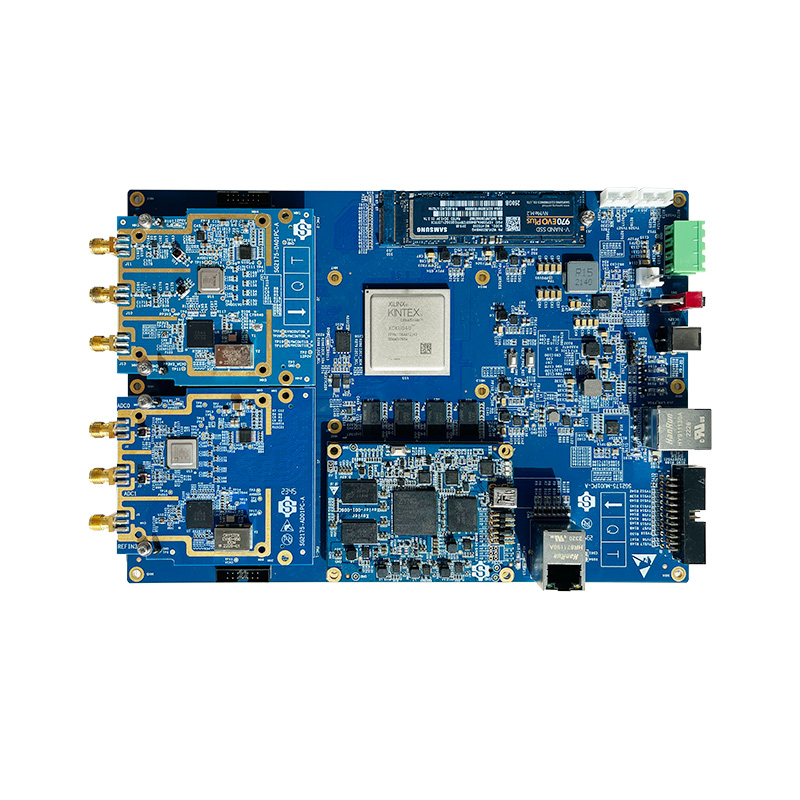
In-Depth Analysis of the RV1126 Chip Camera Module for Facial Recognition Solution
With advancements in computing power, algorithm development, and camera technology, facial recognition technology has been widely applied in various fields such as security, smart transportation, and passenger flow monitoring. This biometric identification method relies on capturing facial images or video streams through cameras, followed by a series of processing steps, including image preprocessing, face detection, feature extraction, recognition, and feedback. The technical specifications of the hardware play a crucial role in determining the accuracy and reliability of facial recognition results.
1. Overview of the Rockchip RV1126 Chip
To address the specific hardware requirements of facial recognition technology, various manufacturers have developed camera-focused chip modules. Among them, the Rockchip RV1126-based camera module stands out as a highly representative solution.
The Rockchip RV1126 is a high-performance intelligent SoC designed by Rockchip for advanced vision processing. It features a quad-core ARM Cortex-A7 processor and an integrated NPU, significantly boosting computing power and AI processing efficiency. Supporting 4K/30FPS video with H.264/H.265 encoding and decoding, it is well-suited for high-quality imaging applications. Additionally, its compatibility with multiple image sensors enables robust computing capabilities and advanced image and video processing for camera applications.
Below are the key technical specifications of the RV1126:
- CPU: Quad-core ARM Cortex-A7 + RISC-V MCU, providing efficient processing performance.
- NPU: 2.0 TOPS neural processing unit (NPU) for accelerating AI models, supporting standalone AI execution with INT8/INT16 mixed operations.
- ISP: Dedicated 14MP hardware-based image signal processor (ISP),with post-processing support. Capable of hardware-accelerated 4K H.264/H.265 encoding and decoding.
- 2D Graphics Engine: Offers hardware support for rotation, mirroring (x/y), scaling, and alpha-layer blending to optimize graphics performance.
- IEP (Image Enhancement Processor): Image enhancement and noise reduction.
- VOP (Video Output Processor): Delivers 1080P@60fps output with multiple supported formats, including RGB888, ARGB888, RGB565, YCbCr422, YCbCr420, and YCbCr444.
- PMU (Power Management Unit): Features five independent power domains for optimal energy efficiency and stability.
- Memory: 32-bit DDR3/DDR3L/LPDDR3/DDR4/LPDDR4B with high bandwidth.
- Storage: Compatible with eMMC 4.51, SPI Flash, and NAND Flash storage solutions.
- Display: Provides MIPI-DSI and RGB interfaces, delivering resolutions up to 1080P@60fps.
- Camera Interface: Supports two independent MIPI CSI/LVDS/sub-LVDS inputs, along with a 16-bit parallel camera input.
- RTC (Real-Time Clock): Supports an external RTC module for precise timekeeping.
- Network Connectivity: Built-in support for Wi-Fi, Gigabit Ethernet, 100M USB-to-Ethernet adapter, and a 4G module interface for flexible networking options.
- Audio Capabilities: Integrated RK809 audio decoder for high-quality sound processing.
- Peripheral Interfaces: Includes Gigabit Ethernet with TSO (TCP Segmentation Offload) for network optimization, USB 2.0 OTG/host, two SDIO 3.0 slots, 8-channel I2S with TDM/PDM, 2-channel I2S, as well as I2C, SPI, CAN, NET, UART, ADC, MIPI CSI, and MIPI DSI interfaces.
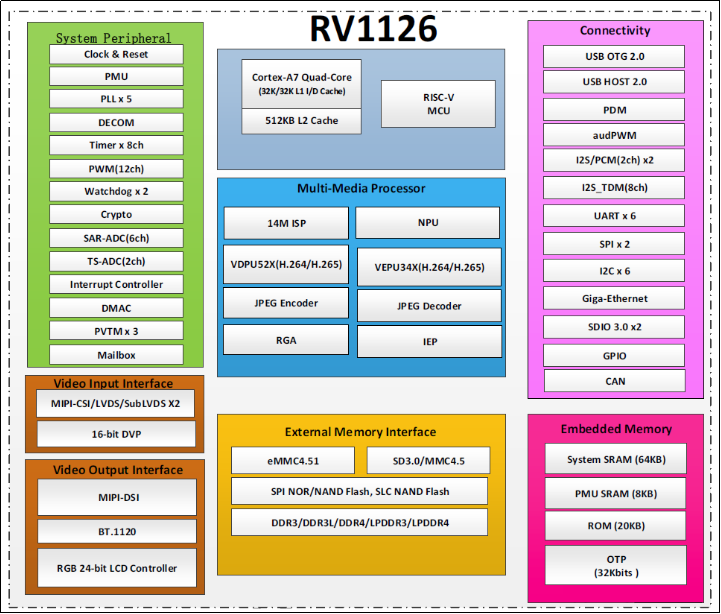
With its superior image processing capabilities and powerful computing performance, the RV1126 chip camera module is an ideal solution for facial recognition applications. Its support for various peripheral devices and high-speed interfaces enhances versatility, making it widely used in intelligent security, smart transportation, and identity verification systems.


2. Horus AI Camera Based on RV1126
Smartgiant, leveraging years of expertise in embedded software and hardware development, has developed the Horus AI Camera product and its software development kit, both powered by the RV1126 chip.
The Horus AI Camera is a high-performance, customizable AI camera compatible with various sensors and lens modules. It offers comprehensive SDK support and is widely used in applications such as facial recognition, crowd counting, security monitoring, and OCR. With exceptional image capabilities and AI processing performance, it provides powerful hardware and software solutions tailored for intelligent vision applications.
Key Features of the Horus AI Camera:
- Rockchip RV1126-based AI camera module
- Quad-core ARM Cortex-A7 processor
- 2.0 TOPS AI computing power
- Supports USB 2.0 x 1, Ethernet port x 1, UART x 2, TF card expansion interface
- Accelerates the development of AI algorithms to hardware implementation
- Standard IPC-38 Board design for quick housing customization
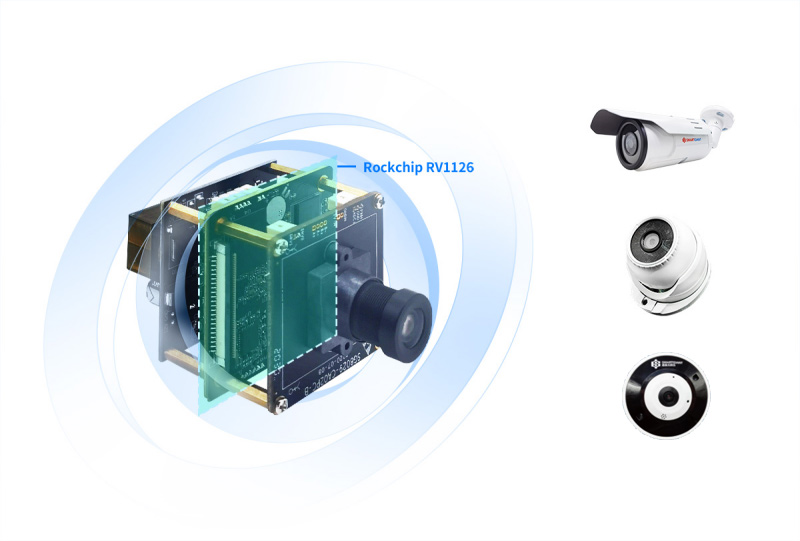
Typical Application Scenarios:
The Horus AI Camera performs multi-dimensional facial feature recognition on detected individuals, such as on-duty personnel or field workers. It evaluates key factors like fatigue, activity levels, smoking, yawning, and phone usage to determine their work status. The collected data can either be uploaded to a central server for remote monitoring or used to trigger real-time on-site alerts, prompting individuals to adjust their behavior as needed.
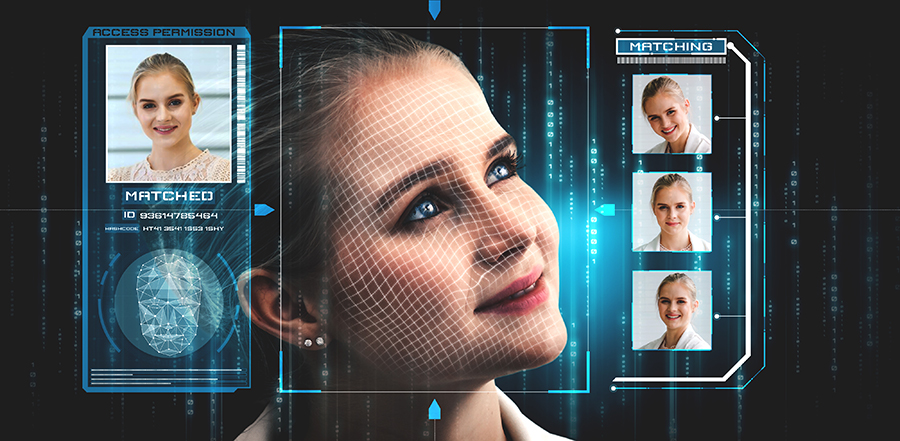
3. Horus AI Camera Software Development Kit
The Horus AI Camera Software Development Kit (SDK) is a comprehensive development platform designed for AI camera solutions powered by the Rockchip RV1126 chip. It provides a complete set of tools, including Linux system support, hardware drivers, image processing, and AI application interfaces. Supporting popular development languages such as Python, C, and C++, the SDK simplifies the process of developing, training, and deploying AI models. With flexible customization and an all-in-one solution, the Horus AI SDK significantly reduces development time, minimizes complexity, and accelerates time-to-market.
Horus AI Camera SDK Features:
- Pre-configured Camera platform for simplified development—no need to manage system, drivers, or image processing.
- Easy-to-use AI application interfaces for rapid AI model deployment and validation.
- Supports multiple programming languages, including Python, C, and C++.
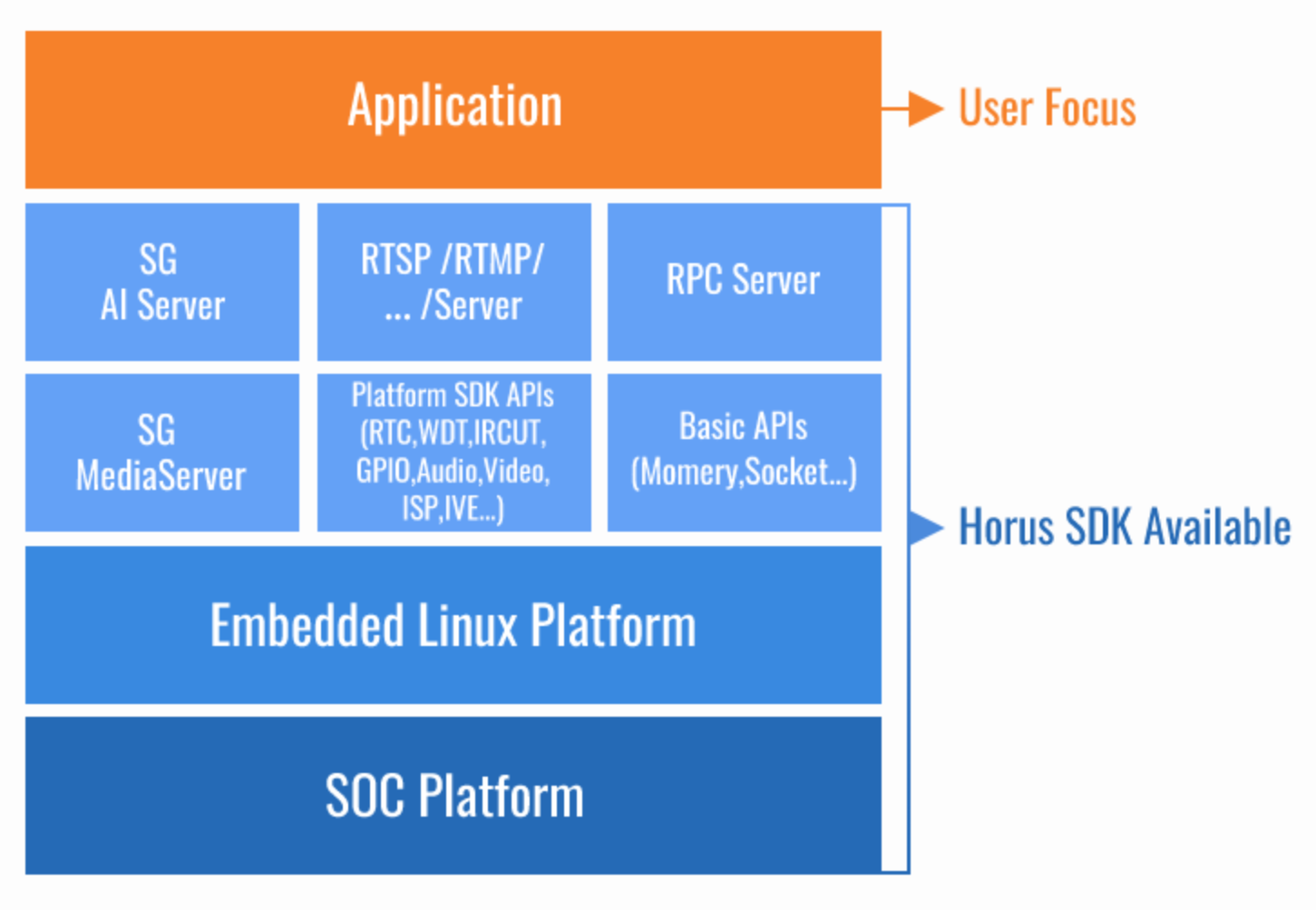
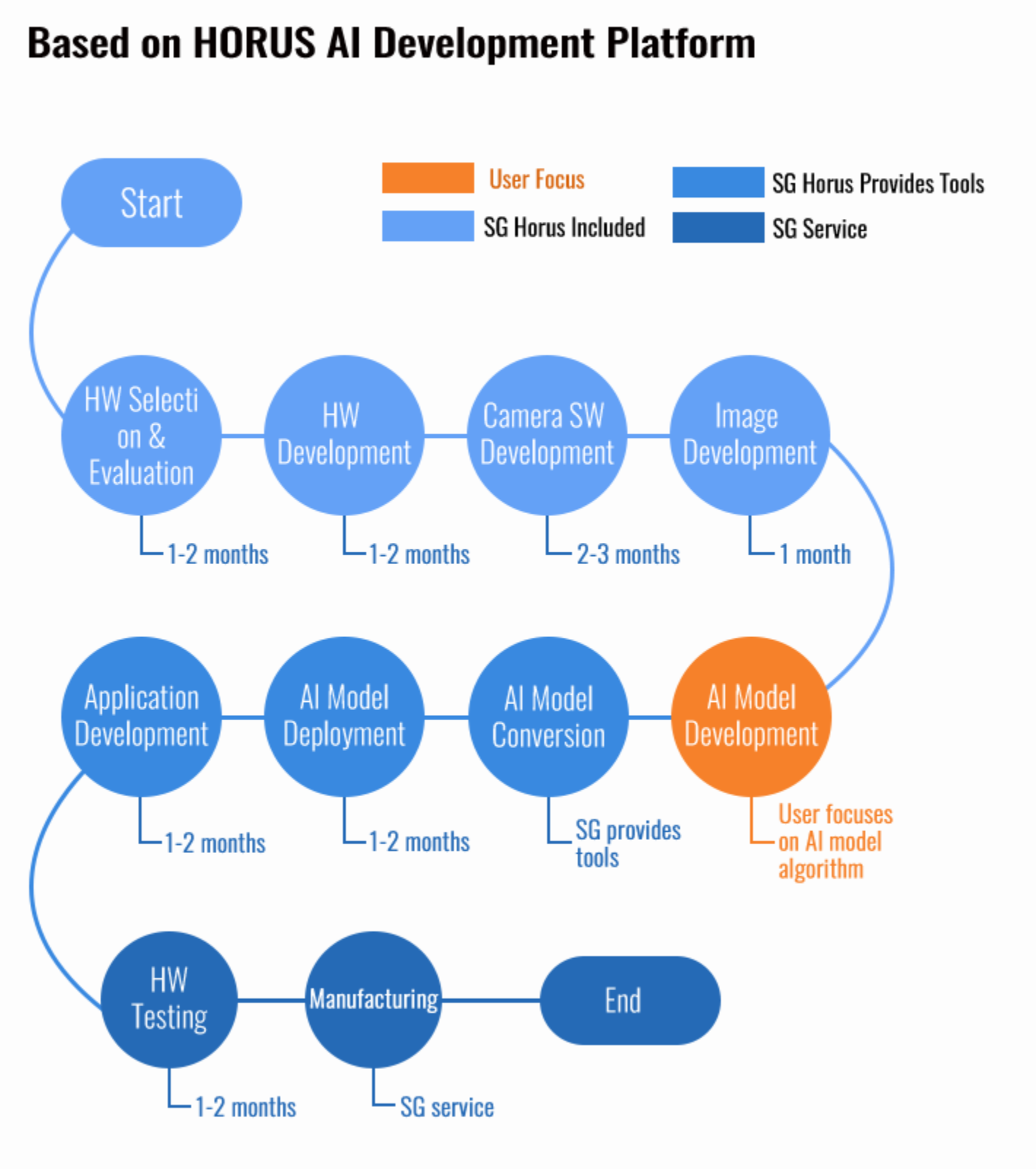
The RV1126 chip camera module and Horus AI camera have significantly strengthened the hardware foundation for facial recognition technology. These innovations enhance both the accuracy and speed of facial recognition while the SDK lowers technical barriers for developers. We are excited about the transformative potential of facial recognition in security, traffic management, and customer service. As the technology advances, we believe it will play a crucial role in shaping the smart world of the near future.
Contact Us
Smartgiant Technology 1800 Wyatt Dr, Unit 3, Santa Clara, CA 95054.
Email: info@smartgiant.com
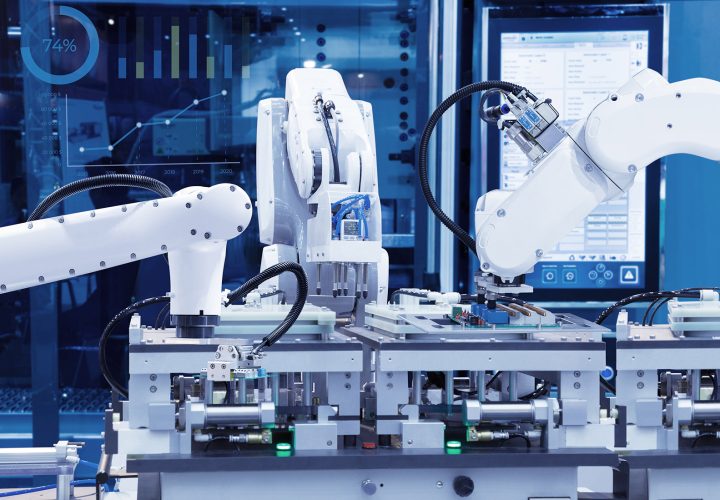
Contact Us
Smartgiant Technology 1800 Wyatt Dr, Unit 3, Santa Clara, CA 95054.
Email: info@smartgiant.com



